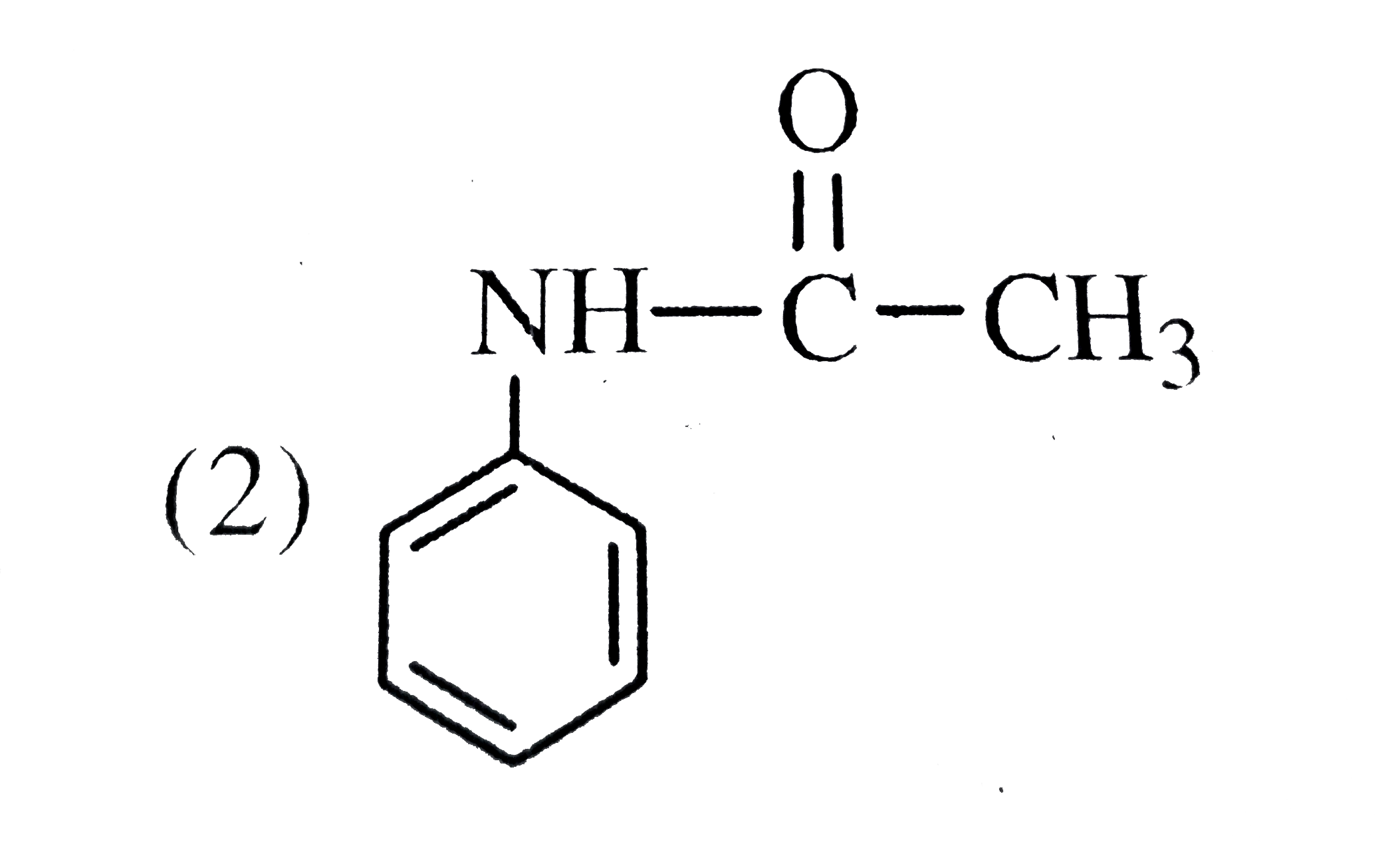Which of the following is most reactive for electrophilic substitution reaction




To determine which compound is most reactive for electrophilic substitution reactions, we need to analyze the activating and deactivating effects of the substituents on the aromatic rings provided. Here’s a step-by-step breakdown of the solution:
Step 1: Identify the Compounds
We have four compounds to consider:
1. Phenol (C6H5OH)
2. Toluene (C6H5CH3)
3. Acetanilide (C6H5NHCOCH3)
4. Nitrobenzene (C6H5NO2)
Step 2: Understand Electrophilic Substitution Reaction (ESR)
Electrophilic substitution reactions involve the attack of an electrophile on an aromatic ring. The reactivity of the ring depends on the presence of activating or deactivating groups.
Step 3: Analyze the Activating/Deactivating Effects
- Phenol: The hydroxyl (-OH) group is an activating group due to its lone pairs of electrons, which can donate electron density to the ring, making it highly reactive.
- Toluene: The methyl (-CH3) group is a weakly activating group. It donates electron density through hyperconjugation but is less effective than -OH.
- Acetanilide: The acetamido (-NHCOCH3) group is moderately activating. It has resonance effects but is less effective than -OH.
- Nitrobenzene: The nitro (-NO2) group is a strong deactivating group. It withdraws electron density from the ring, making it the least reactive.
Step 4: Rank the Reactivity
Based on the activating and deactivating effects:
1. Phenol: Most reactive (strongly activated)
2. Acetanilide: Moderately reactive
3. Toluene: Weakly reactive
4. Nitrobenzene: Least reactive (strongly deactivated)
Conclusion
The compound that is most reactive for electrophilic substitution reactions is Phenol.
We have four compounds to consider:
1. Phenol (C6H5OH)
2. Toluene (C6H5CH3)
3. Acetanilide (C6H5NHCOCH3)
4. Nitrobenzene (C6H5NO2)
Electrophilic substitution reactions involve the attack of an electrophile on an aromatic ring. The reactivity of the ring depends on the presence of activating or deactivating groups.
- Phenol: The hydroxyl (-OH) group is an activating group due to its lone pairs of electrons, which can donate electron density to the ring, making it highly reactive.
- Toluene: The methyl (-CH3) group is a weakly activating group. It donates electron density through hyperconjugation but is less effective than -OH.
Based on the activating and deactivating effects:
1. Phenol: Most reactive (strongly activated)
2. Acetanilide: Moderately reactive
3. Toluene: Weakly reactive
4. Nitrobenzene: Least reactive (strongly deactivated)
The compound that is most reactive for electrophilic substitution reactions is Phenol.
Topper's Solved these Questions
Similar Questions
Knowledge Check
Which ofthe following is most reactive towards nucleophilic substitution reaction ?
ACH2=CH−ClBC6H5ClCCH3CH=CHClDClCH2−CH=CH2Which one of the following is most reactive towards nucleophilic substitution reaction ?
ACH2=CH−ClBC6H5ClCCH3CH=CHClDClCH2−CH=CH2Which of the following is the most reactive towards nucleophilic substitution reaction?
AClCH2−CH=CH2BCH2=CH−ClCCH3CH=CH−ClDC6H5Cl
Which of the following is least reactive in a nucleophilic substitution reaction?
View SolutionWhich of the following is least reactive towards nucleophilic substitution?
View Solutionwhich of the following is most reactive towards nucleophilec addition reaction ?
View SolutionWhich of the following is most reactive towards electrophillic aromatic substitution for halogen ?
View SolutionWhich one of the following is most reactive towards electrophilic attack?
View Solution
